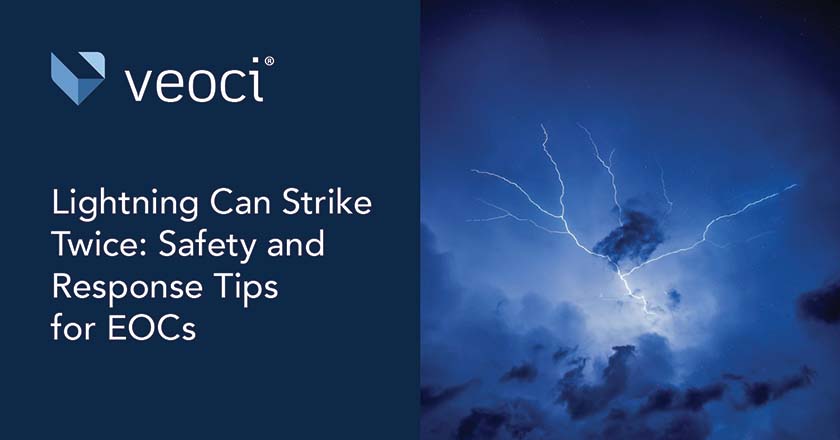For most of the country, thunderstorms are most common during the spring and summer months. In some states, however, such as Alabama, Mississippi, and Florida, storms can happen any time of the day, month, or year.
Thunderstorms can bring many weather components at once: heavy rain that can lead to flooding, hail, high winds, and even tornadoes. And, despite appearances, all thunderstorms contain lightning.
Lightning is a major threat connected to thunderstorms, as a strike can electrocute on contact, split trees, cause electrical failures, and even ignite fires. For the West Coast, lightning season unfortunately coincides with their dry season, leading to forest fires that stem from passing storms.
Thunderstorms are so common in some regions that residents may not take the threat seriously. In other regions, the storms only strike for a short part of the year, so many residents aren’t knowledgeable on how to respond. With that in mind, here are some reminders, or some new safety tips, to remember the next time those dark clouds come in.
Be Prepared and Take Action
Pay attention to weather alerts.
â€Have multiple channels for possible storm notifications. Understand the differences between thunderstorm watches and warnings, as well as the appropriate ways to respond.
When thunder roars, go indoors.
â€If you’re outside when you hear a clap of thunder, make sure you immediately seek shelter. A safe place to ride out the storm is a building with electricity and plumbing, or an enclosed metal topped vehicle with the windows up.
But just going indoors is not enough.
â€When you do go indoors, be sure to stay away from concrete floors or walls, as lightning can travel through the metal wires or support beams. Don’t take a shower, run a bath, or wash the dishes, as lightning can travel through plumbing, too. Though watching the storm come in can be fascinating, keep your distance from windows and doors. Also avoid using any electronic devices that are connected to an electrical outlet while riding out the storm.
The great outdoors aren’t so great during a thunderstorm.
â€If getting to a safe building or car is not feasible, try to find a group of low trees. Do not take shelter under an isolated tree or under a cliff or rocky overhang. Avoid tall structures that attract lightning. If you are isolated in a field with nothing around you, do not stay standing; instead, squat as low as you can with your hands on your knees; never lay down flat. If you are in or near a body of water, such as a pool, pond, or lake, immediately get out and seek shelter.
Drive safely.
â€If you are driving when a thunderstorm comes through, make sure your windows are all the way up, find a safe place to park, and turn on your hazard lights. Try to find a place away from trees to prevent dead limbs that fall during the storm from blocking you in. Do not attempt to drive through pooled water on roadways as puddles that seem shallow could in fact sweep your car away.
Thunderstorms, Lightning, and EOCs
Emergency operations centers (EOCs) can become quite busy when a thunderstorm rolls in, as there’s more to worry about than just rain.
EOCs must have the most up to date weather forecast data. Being able to track and time thunderstorms, as well as predict the severity of them off of a radar, is key to being prepared. Multiple storms can occur at once, in a cluster or even a line. Some of the most severe weather in these groupings can be in a single thunderstorm that affects one location for a long period of time.
A clear and succinct understanding of these storms, including their tracks and potentials, simplifies communications. EOCs and their communication specialists can craft precise notifications for residents and coordinate mutual aid more effectively. Text messages, emails, radio, and television announcements all add another layer to the preparation and communication for a storm.
When calls begin to come in during and after the storm, utilizing geographic information system (GIS) mapping to identify lightning strikes, flooded roads, down electric wires is game-changing. An EOC can have a birds-eye view of where to deploy responders and avoid bottlenecks, as well as where responders already are, and where to focus mutual aid.
One dashboard with all of this operational data allows EOCs to make accurate, informed, shared decisions during a time where safety is of the utmost importance.
The Calm After a Storm
Pay attention to the alerts and notifications that your local EOC will send out, as they will be able to give you the most up to date information of what to expect and how to respond. Seek safe shelter, be sure to report any down electrical lines or flooded roads you might come across, and as always, dial 911 if you need help.
An afternoon thunderstorm may become part of your spring and summer routine, a chance to cool off inside or an excuse to not water your plants that day. It is important to remember however, that though these storms can pose a real threat, and to never ignore any rumbles you might hear off in the distance.








